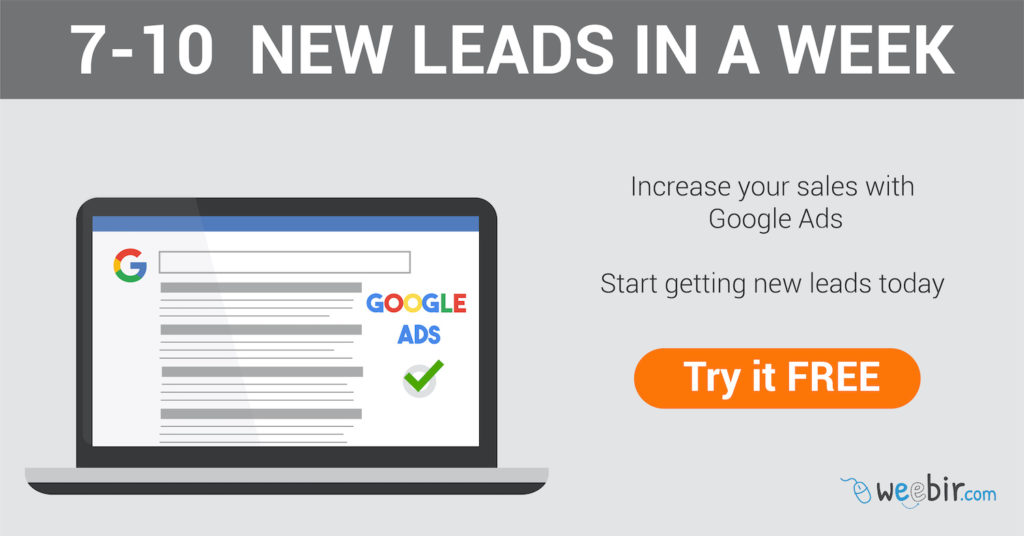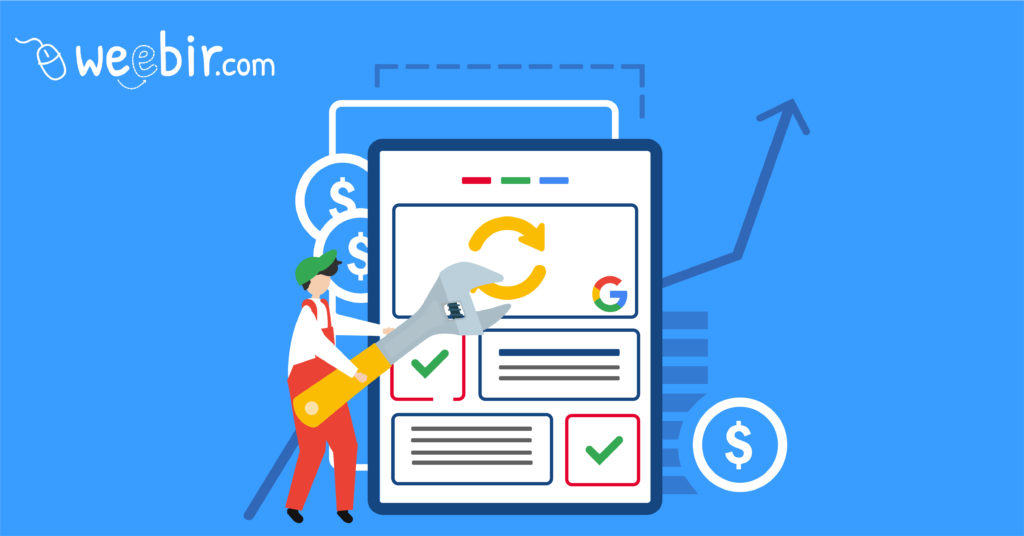You got your Google Ads campaign live… now what?
Optimization is one of the most important steps on any marketing campaign. In order to get the desired results, some corrections and improvements must be made to your campaign.
Depending on the stage of your campaign, we suggest 2 different levels of optimization.
If you don’t have a Google Ads campaign yet, click here so you can start for free >
Primary strategies
These strategies are applied more aggresively during the first few months of your campaign. We recommend reviewing the following items fortnightly during the first 2-3 months:
1. Review keywords
Review the search terms people used to find your ads. You can use this information to further understand your potential client, and their mindset when searching for a solution.
These keywords can give you ideas of what language to use throughout your campaign. You can, for instance, find new keywords to add to your campaign.
You will also find keywords that are not ideal. You can add them as negative keywords, so your ads will not be triggered in future similar searches.
If you started general, as we suggest in our planning article, you can identify the most clicked keywords to create specific ads and landing pages for them.
2. Specific ads creation
After analyzing the keywords and finding different trends, you can create specific ads that adapt to the most clicked keywords.
This way, you will get more clicks from your ads due to an increased congruency with the user’s language.

3. Specific landing page creation
As in the ads, we suggest creating specific landing pages. Once you have identified which services users are searching for the most, you can create better performing landing pages.
Having an increased congruency, starting from the keywords and finishing in the landing page, will also increase your campaing’s performance.
4. Tracking conversions
There are different conversions within your campaign. Clicks to your ad and leads generated are the most obvious ones, but there are other conversions that can be tracked.
We are talking about internal clicks within your landing page. For instance, clicks to the phone number or the chat button.
Understanding how users are interacting with your landing page, by knowing which buttons are being clicked and which ones are not, will allow you to create different variations to increase interaction.
Advanced strategies
After applying the primary strategies 4-6 times, it is time to maximize conversions with advanced strategies.
1. Remarketing
Remarketing will help you recover past visitors to your website. Using a tracking code and a special setup, you can show ads to past visitors of your website.
This is very powerful because someone that visited your website has already shown interest in your offer. Using the Google Display Network, these past visitors can see more information about your brand while they are visiting other websites.
This will help them return to your website and your funnel. Repetition and frequency are key for any marketing campaign.
2. A/B testing your landing pages
An A/B test is when 2, or more, variations of your landing page compete between them.
After a specific period of time, one variation will be more effective than the other. You can then start a new experiment. This way you will always have the most effective variation of your landing page active, keeping your campaign optimized.
You can experiment with variations to design, images, calls to action, and offers. We recommend experimenting with just one variable on each experiment. This way you will not mix information, and it will be easier to understand your audience.
Google Ads is a key tool to show your brand to potential clients. Google can set you in front of the right people on the right time, making it possible to find new clients.

Want to increase your sales? Get 7-10 new Leads in the next week. Fill out the form and let’s talk about your project.
[wpforms id=”3141″ title=”false” description=”false”]

